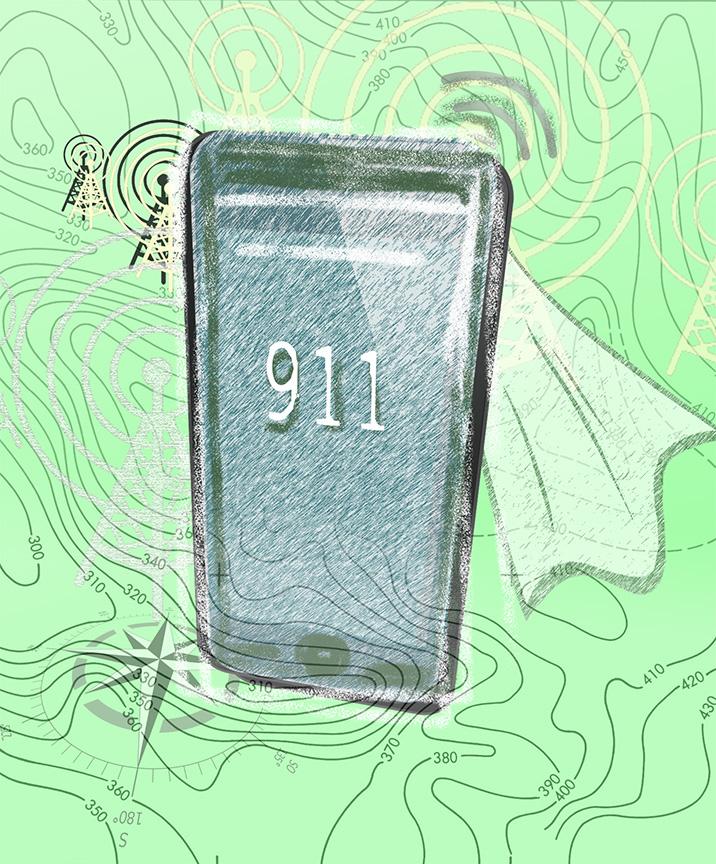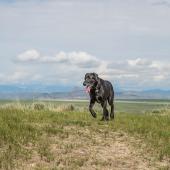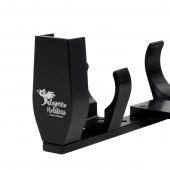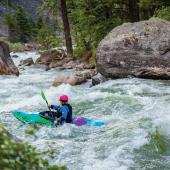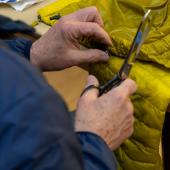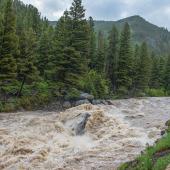Saved by the Cell
Phones in the backcountry.
You’re in a remote area and your friend is injured, or you’re seriously lost and not equipped to spend the night out in severe weather. Dealing with this kind of emergency, or more importantly, preventing it from happening in the first place, begins way before you start the trip by assembling the right gear, mastering map and compass, and learning survival skills. While search-and-rescue experts tell us that electronic devices shouldn’t be seen as substitutes for preparation and skills, and that a cell phone should never be your sole or primary means of navigation and communication in the backcountry, lists of essential emergency gear often include a cell phone anyway. Here’s why.
In a serious emergency, your cell may provide the means to get help or be located, even where there’s no phone service. To reach 911, turn the cell on; even with no bars, try the call anyway. There’s a good chance you’ll get through, and if you don’t, head to higher ground (when possible) and try again. If you reach 911, the process of determining your location will begin even before any words have been exchanged.
Let’s say you’re not able to reach 911. Turning the phone on triggers your carrier to use cell-tower triangulation to begin recording, or “pinging,” the time and your location although no call is made and there’s no regular service. Search-and-rescue authorities and 911 staff have access to your data trail as recorded by the carrier, and rescuers may be able to use this information to find you. That’s why you should always give your emergency contact person the cell numbers and names of carriers for each person in your party, and also carry a portable phone charger.
A disposable phone is a great option if you want to avoid taking your primary cell into the backcountry. The 911 function will still be active if the phone is out of minutes or the device has not been activated. (Although, if you reach 911 on an un-activated phone and are disconnected, you’ll have to call back because the phone won’t have its own assigned number to call.)
It’s important to remember that there’s no guarantee you’ll be found through your cell; the technology and protocols are still evolving, and phone companies point out that weather and terrain can interfere with establishing your location. Be sure to carry the survival basics—compass, map, extra water and food, water purifier, extra clothing, matches and fire starter, tarp or space blanket, light, whistle, knife, and first-aid kit. Consider traveling with at least one other person, since going solo carries an extra amount of risk. If you’re with a group, decide in advance on your itinerary and realistic goals; then, keep everyone reasonably close together. And learn as much as you can about individual and group safety in the outdoors, including factors to assess in deciding when to call for help.
Top-5 Backcountry Phone Tips
1. Leave your cell number, name of carrier, itinerary, and expected return time with your emergency contact person. Then, when you’re in the backcountry, be sure to turn it on every so often to automatically create a record with your carrier of the direction you’re headed and when.
2. Keep your cell in a warm pocket; if it gets cold, it might die faster or it may not work at all.
3. If you can’t reach 911, wait ten seconds and try again. This will increase your chance of success. If you do get through, be prepared to provide as much information as you can about your location.
4. Because cell phones differ in their power and functions, have several phones in your group.
5. Consider a satellite locator device; it’s more reliable than a cell phone.


